Understanding the Wishbone Suspension System
Double-wishbone suspensions, increasingly favoured for their superior handling, are automotive suspension systems that connect a vehicle's wheel to its chassis, ensuring a smooth and responsive ride over diverse terrains. These suspensions grace a plethora of vehicles, ranging from compact cars to hefty trucks and even high-performance sports cars.
Comprising two or more A-shaped wishbones with the apex serving as a pivot, the system allows the wheel to move vertically with minimal lateral displacement. This configuration eclipses traditional leaf spring systems by enhancing wheel precision, stability, and handling. The double-wishbone suspension is lauded by both manufacturers and consumers for its blend of agility and comfort.
These systems are underpinned by principles of geometry and materials science, with wishbones crafted to endure the forces acting on the wheels while preserving an ideal form for comfort and control. Materials span from conventional metals such as steel and aluminum to advanced composites that combine strength and lightness. The components' strategic placement facilitates vertical and lateral stability, with multiple chassis connections to manage the wheels' intricate motions during travel.
Varieties of Wishbone Suspension Systems
Wishbone suspension systems are available in several variants to suit different vehicle specifications and driving conditions. Common types include:
-
MacPherson Strut Wishbone System: This prevalent design features a pair of wishbone-shaped arms linking the subframe and the lower control arm. Renowned for its simplicity, it ensures a comfortable ride.
-
Multi-link Wishbone System: Employing three or more wishbones, this system delivers heightened wheel control for exceptional handling, often found in performance vehicles for a refined driving experience.
-
Twin-Tube Wishbone System: Incorporating dual wishbones at each side of the front end, one connected to the shock absorber's top and the other to the lower control arm, it strikes a balance between comfort and sporty performance.
-
Double Wishbone System: With four wishbones (two upper and two lower), this setup ensures meticulous wheel movement control, preferred in high-performance and luxury vehicles for top-tier handling.
Selecting the Right Wishbone Suspension System
Choosing a suitable Wishbone Suspension System for your vehicle involves considering various factors:
-
Compatibility with Vehicle Make and Model: Confirm that the system fits your specific vehicle make and model to ensure optimal performance.
-
Material Quality: Opt for robust materials like iron or steel for enhanced durability and performance, particularly if your vehicle will face harsh conditions.
-
Adjustability: If precise handling tweaks are necessary, seek systems with extensive adjustability features.
-
Smart Type Features: Some systems incorporate smart technologies such as sensors or digital controls that can boost performance or offer insightful data. Evaluate if these features meet your requirements.
-
Type of Front Suspension: Choose between MacPherson or multi-link types based on your vehicle's needs, considering their impact on handling and comfort.
Exploring Wishbone Suspension Systems on Alibaba.com
Alibaba.com is a premier global marketplace connecting businesses with an extensive selection of suppliers for automotive components, including wishbone suspension systems. The platform caters to a wide array of vehicles, from compact cars to heavy-duty trucks, offering businesses the flexibility to find suitable components for their specific needs.
The intuitive interface of Alibaba.com enables buyers to navigate through options by material, vehicle compatibility, smart features, color, and more, ensuring a targeted search without the clutter of unrelated products.
Alibaba.com's dedication to promoting international trade is underscored by services like Trade Assurance, which safeguards payments until buyers confirm the satisfactory receipt of their orders. This focus on security and customer satisfaction positions Alibaba.com not merely as a marketplace but as a trusted ally for businesses sourcing high-quality automotive parts globally with efficiency and confidence.
Frequently Asked Questions about Wishbone Suspension Systems
What constitutes a wishbone suspension system in automotive engineering?
In automotive engineering, a wishbone suspension system, or double wishbone system, is an independent suspension design that connects the wheels to the vehicle, ensuring stability and a smooth ride.
How is a wishbone suspension distinct from a control arm?
Distinct from a control arm, which is a single pivoting arm, a wishbone suspension features both an upper and lower arm connected at a pivot point, often incorporating a bushing or ball joint for subframe attachment.
What benefits does a wishbone suspension system provide?
Wishbone suspension systems excel in motion range and wheel alignment maintenance on uneven surfaces, outperforming traditional MacPherson struts, which generally offer a more restricted motion range.
When is a wishbone suspension system advisable for a vehicle?
Vehicles that demand precise wheel movement control, particularly high-performance or racing cars, benefit from wishbone suspension systems due to their enhanced handling and stability during maneuvers like cornering and braking.
Is it feasible to retrofit a vehicle with a wishbone suspension system?
Retrofitting a vehicle with a wishbone suspension system is achievable but requires extensive modifications to the chassis and suspension, necessitating professional technical expertise.
What materials are commonly used in wishbone suspension systems?
Wishbone suspension systems are typically constructed from resilient materials such as steel or aluminum to withstand operational stresses and maintain structural integrity.
Do wishbone suspension systems vary for different car models?
Indeed, there are diverse wishbone suspension systems tailored to fit specific car models and dimensions, making it imperative to select the appropriate type for your vehicle's fit and function.
How should one select the material for a wishbone suspension system?
Selecting a material for a wishbone suspension system hinges on the vehicle's operational conditions, with steel favored for strength and durability, while aluminum is chosen to reduce weight.
What role does the ball joint play in a wishbone suspension system?
The ball joint is a pivotal element, linking the wishbone to the steering knuckle and facilitating articulation, while providing a low-friction pivot point for smooth suspension operation.
Is it necessary to replace both wishbones, or can one suffice?
Although replacing both wishbones is typically advised for balanced performance, if only one shows wear, replacing the single affected component may be sufficient.
What are telltale signs of wear in wishbone suspension components?
Signs of wear in wishbone suspension components include uneven tire wear, handling difficulties like drifting or oversteer, clunking noises on driving or over bumps, and visible damage or leakage.

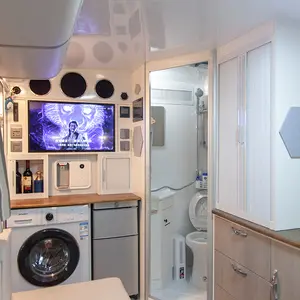


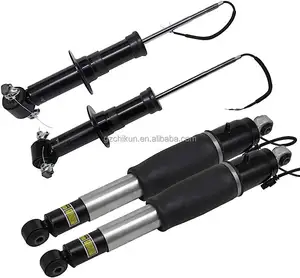




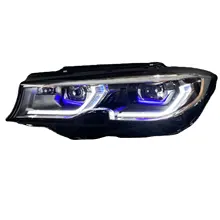



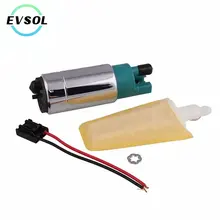



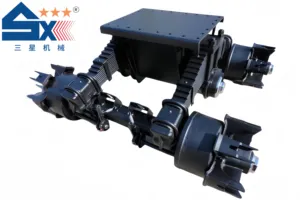

























 浙公网安备 33010002000092号
浙公网安备 33010002000092号 浙B2-20120091-4
浙B2-20120091-4